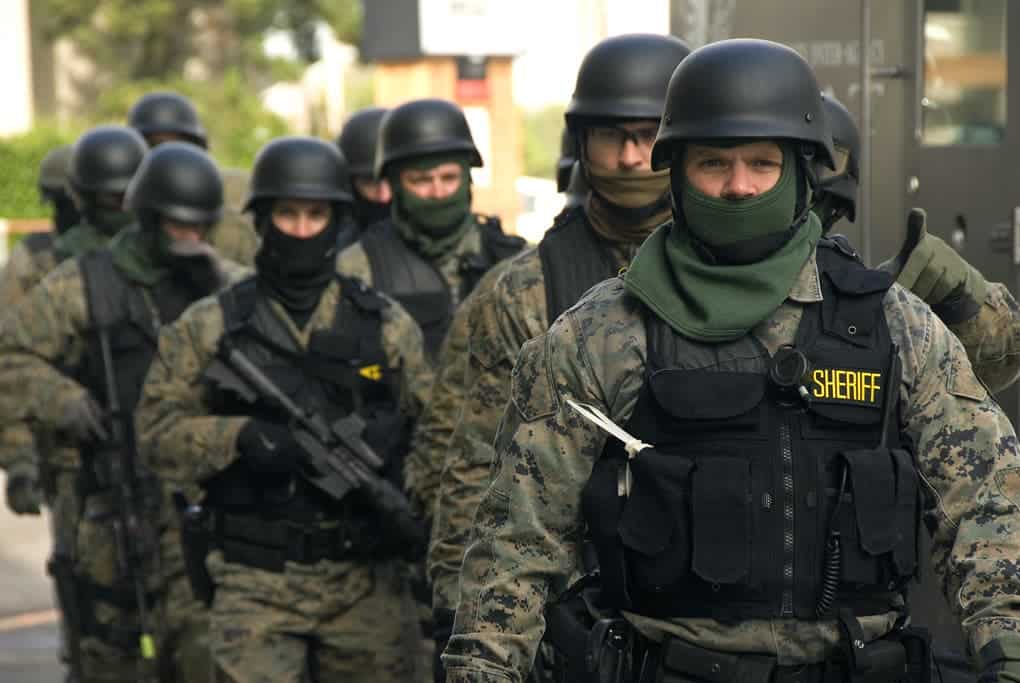A new study sheds some much-needed light on a controversial topic: police militarization. According to the new research, giving the police more weapons doesn’t have much benefit, and it can severely weaken public trust.

SWAT team preparing for an exercise. Image credits: Smallman12q / Oregon Department of Transportation.
In 1966, Abraham Maslow, one of history most renowned psychologists, put forth an idea called the “law of the instrument” — essentially a cognitive bias, an over-reliance on a familiar and often forceful tool. He summed it thusly: “I suppose it is tempting, if the only tool you have is a hammer, to treat everything as if it were a nail.”
Humans, however, are not nails — so does it make sense to use the police as a hammer?
When an armed police intervention takes place, something is already wrong. But sometimes, the intervention itself makes things worse. This month marks the four-year anniversary of protests over the police killing of Michael Brown in Ferguson, Missouri, an incident which ignited massive unrest in the local community and was met with an armed police intervention. The police established curfews and deployed riot squads, using tear gas and often violence to cull down any protests — be they violent or peaceful. In the aftermath of the events, it became clear that the police strongly antagonized the local population, sparking a national debate about police militarization and the use of force.
Proponents of police militarization say that it can stop ongoing violencewe or even prevent it. Opponents say that these tactics are disproportionately used on minorities and create mistrust between the people and the police — a mistrust which can easily escalate and lead to additional violence and uncontrollable situations. A study published by Jonathan Mummolo, assistant professor of politics and public affairs at Princeton University, found evidence that supports the latter.
Mummolo carried out a mixed study involving both existing data and survey experiments. Particularly, he looked at administrative crime and officer safety data, records of when and where militarized police units were created and deployed, and what the results were.
His conclusions are stark: militarized policing does not lead to less violent crime or less violence against police officers. Furthermore, it does reduce police reputation, which makes it more difficult for officers to carry out their missions in the long run. He compared the deployments of SWAT teams with the number of violent crimes and officers who were killed or injured.
Results showed that creating more SWAT teams and increasing SWAT deployments had little to no benefit in reducing violent crime and increasing officer safety. While results may not hold for all agencies and all situations, it’s a strong indication that militarization isn’t the wonder-tool some believe it to be.
“The routine use of militarized police tactics by local agencies threatens to further the historic tensions between marginalized groups and the state with no detectable public safety benefit,” said Mummolo, who is on the faculty at Princeton’s Woodrow Wilson School of Public and International Affairs and the Department of Politics.
Mummolo’s study went on to test another hypothesis associated with militarization: the disproportionate application on minorities. His analysis was only carried out on the state of Maryland, but within the state, he found that black residents face a more pronounced risk of experiencing militarized policing — even after controlling for social factors and local crime rates.
Lastly, Mummolo wanted to see if militarized interventions reduce public trust in the police. Results show that citizens react negatively to the appearance of militarized police, and are subsequently less likely to want police patrols in their neighborhoods.
However, Mummolo says that the conclusion of the study is not that militarized tactics need to be eliminated from police tactics. SWAT teams, for instance, are an important tool for emergency situations when no other alternative is available.
“Restricting their use to those situations may improve perceptions of the police among citizens,” Mummolo said.
This isn’t the first study to suggest that police militarization brings forth unwanted consequences: in 2017, a study found a statistically significant positive relationship between militarization of the police and fatalities from officer-involved shootings.
The study has been published in PNAS.










